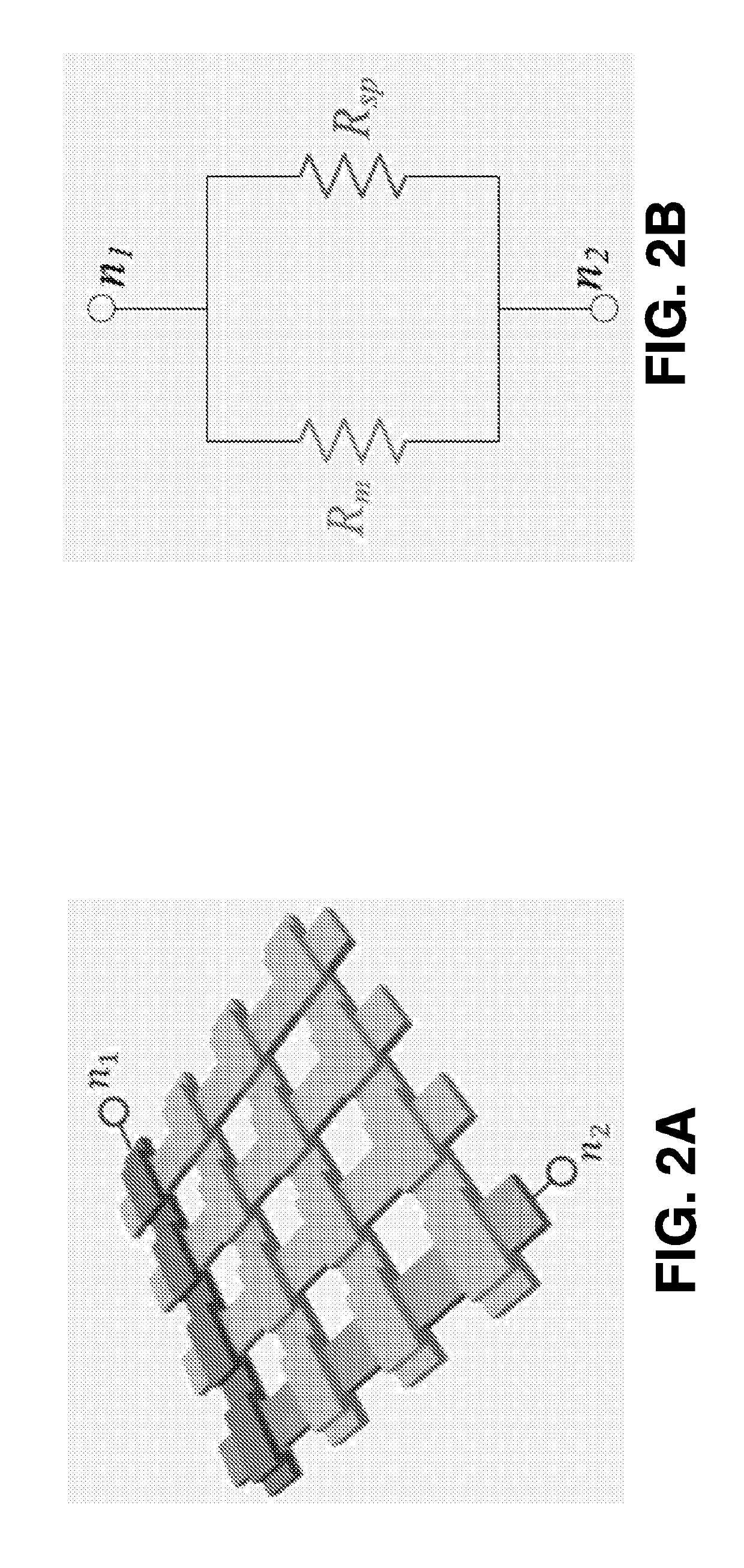Single-readout high-density memristor crossbar
a memory array and single-readout technology, applied in the field of high-density crossbar memory arrays, can solve the problems of memory technology, unable to meet the demands of modern applications, -path problem, etc., and achieve the effects of reducing access time to the crossbar array, reducing the number of readouts, and minimal control and sensing circuitry
- Summary
- Abstract
- Description
- Claims
- Application Information
AI Technical Summary
Benefits of technology
Problems solved by technology
Method used
Image
Examples
Embodiment Construction
[0043]Some embodiments of the present invention will now be described more fully hereinafter with reference to the accompanying drawings, in which some, but not all embodiments of the inventions are shown. Indeed, these inventions may be embodied in many different forms and should not be construed as limited to the embodiments set forth herein; rather, these embodiments are provided so that this disclosure will satisfy applicable legal requirements. Like numbers refer to like elements throughout.
Sneak Paths Analysis
[0044]Sneak-paths impact the performance of a crossbar-based system in two ways. First, a considerable amount of undesirable energy is consumed while current sneaks throughout the array cells. Second, the sneak currents cannot be predicted because they are data dependent. Data stored in a memory array is naturally random, which leads to a random sneak-paths resistance. This is translated into having distributions to represent the “One” and “Zero” values rather than a sing...
PUM
 Login to View More
Login to View More Abstract
Description
Claims
Application Information
 Login to View More
Login to View More - R&D
- Intellectual Property
- Life Sciences
- Materials
- Tech Scout
- Unparalleled Data Quality
- Higher Quality Content
- 60% Fewer Hallucinations
Browse by: Latest US Patents, China's latest patents, Technical Efficacy Thesaurus, Application Domain, Technology Topic, Popular Technical Reports.
© 2025 PatSnap. All rights reserved.Legal|Privacy policy|Modern Slavery Act Transparency Statement|Sitemap|About US| Contact US: help@patsnap.com



